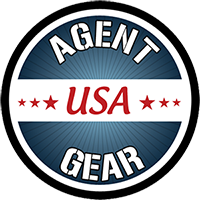How Badges Are Made
How Badges Are Made At The Smith & Warren Badge Factory
View the appearance of the Smith & Warren badge factory on the Science Channel’s How It’s Made.
Ever since the days of the American Wild West, badges have been a way to tell the good guys from the bad. Sheriff’s don’t raise posses to maintain law and order anymore, but a badge continues to be a powerful symbol and simply flashing one can still stop a suspect cold.
The badge comes with the uniform, it identifies the officers rank and unit, so it’s an accessory that makes a statement. Each one is custom made. The client spells out the specifications on an order form, right down to the metal finish and the color of the lettering.
This machine delivers a powerful punch to cut sheriff star shapes from a coiled sheet of brass. They place a star shape in the steel mold of a press. It applies about a hundred and seventy thousand pounds per square centimeter to make an impression on the badge. A punch press trims the ragged edges to make it look neater. A mechanical stamper than inscribes the company name on the back of the badge.
This computerized engraver then marks the rank and other information on the front. They apply a couple of dabs of silver solder to the back of the badge, it’s the substance that will hold the catch and pin joint in place. They blast the back of the badge with the torch and it reaches a temperature of over 1,400 degrees Fahrenheit. This causes the solder to melt, fusing the parts to the badge. They then position the badge under a hydraulic press. Like a steel fist it punches the badge to give it the correct curvature.
Here they spray a mix of water and tiny glass beads to the back. This is called wet blasting and it makes the finish cleaner and more textured. A technician now hooks a pin in the joint that was soldered onto the badge. He slides the assembly onto a rivet, automatically served up by this machine. The machine applies pressure to expand the rivet and lock everything into place. The pin now fits in the catch which will enable the badge to be fastened onto the police officer’s uniform.
Next, they brush enamel into the engraved lettering. The enamel is a mix of glass and water which comes from an ancient metalworking technique called Cloisonné. They fire the badge in a kiln and the glass enamel melts into the lettering. After it hardens, they grind the enameled sections against a stone to expose the inscriptions. They then polish the badge to a mirror finish.
This automated rack immerses the badges in an electroplating solution to give the brass a protective layer of nickel. They’ve laid some badges with 24 karat gold. Now, they apply a strong adhesive to the back of a medallion, then attach it to the center of the badge. The medallion has an official emblem, it’s official to the police force’s jurisdiction. They adjust the catch and its hardware to ensure it move freely and is in good working order, after all, no officer wants to lose his or her badge. They give it a shine and check for surface imperfections and now it’s ready to report for duty. It takes four weeks to make one of these police badges and they should be good for a lifetime of service.

